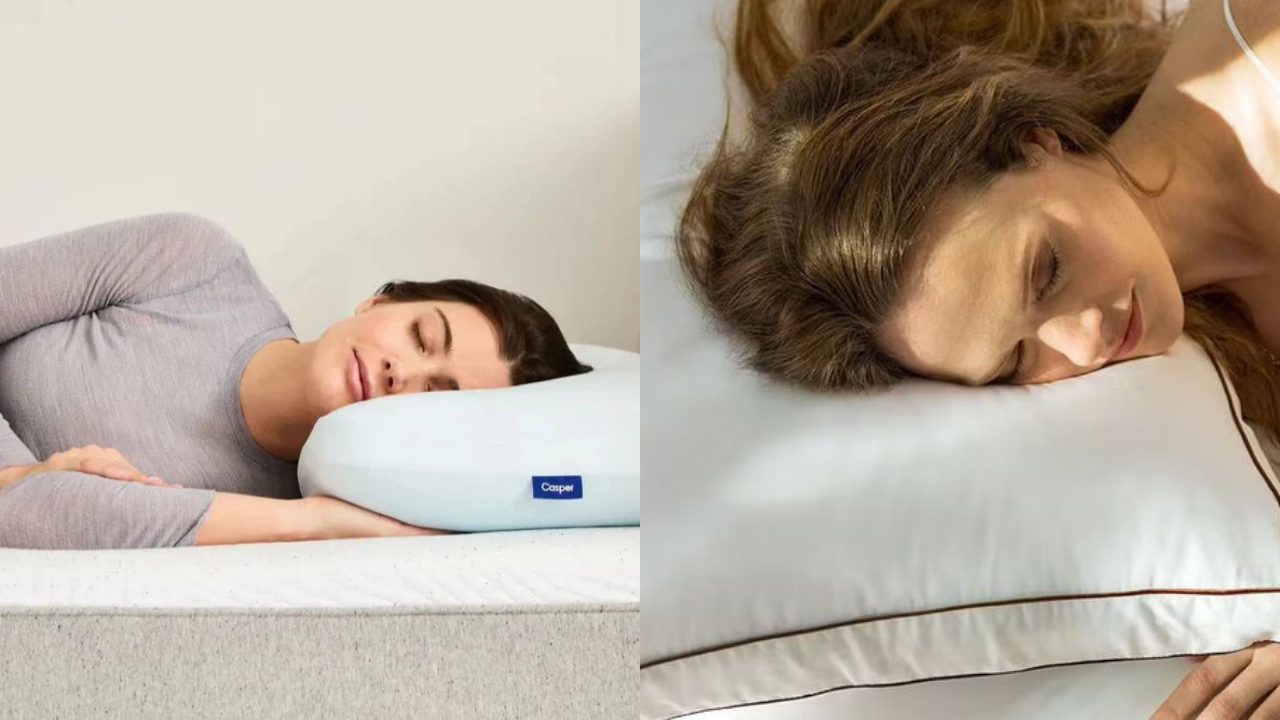
We all know that pillows are made from a wide variety of materials, out of which memory foam and latex are two types of fills commonly found in crowd-favourite picks. While reviews and ratings are crucial in finalizing your choice, it’s important that you choose a pillow type that’s right for your sleeping style.
Just like how choosing the best mattresses for your sleep style is essential in ensuring you get good sleep, a pillow contributes in the same way. From comfort and support to pressure relief and temperature regulation, the best pillow for your needs can support your body and keep you comfortable throughout the night. But what material offers the right feel for you? Latex or memory foam?
Both will offer fantastic support and comfort, but they will suit different people. And, with the Presidents' Day mattress sales coming up, it's a great time to refresh your bed with the perfect pillow for you. Here, we weigh the benefits and drawbacks of memory foam and latex to help you decide which is right for your sleep.
What is memory foam?
Memory foam is essentially a synthetic material made from viscoelastic polyurethane. It was created by NASA researchers in the 1960s to make aeroplane seats more comfortable for non-commercial pilots like astronauts and fighter pilots and to tackle the issue of the immense pressure placed on the pilot’s body when the aircraft took off due to gravitational force.
Memory foam solved the problem by bringing in extra cushioning and a slow-motion contouring feel with its increased viscosity and density (because of certain chemicals added in). Fast forward now, it’s used in mattresses and pillows for that same pressure-relieving sensation, to help sleepers stay in a comfortable position throughout the night.
In most cases, memory foam pillows are made from a unique blend of memory foam and microfiber like our top-rated Casper Hybrid Pillow with Snow Technology. This ensures that it’s soft and cushioning yet supportive enough for your head, neck and shoulders, keeping them in alignment with the rest of your body.
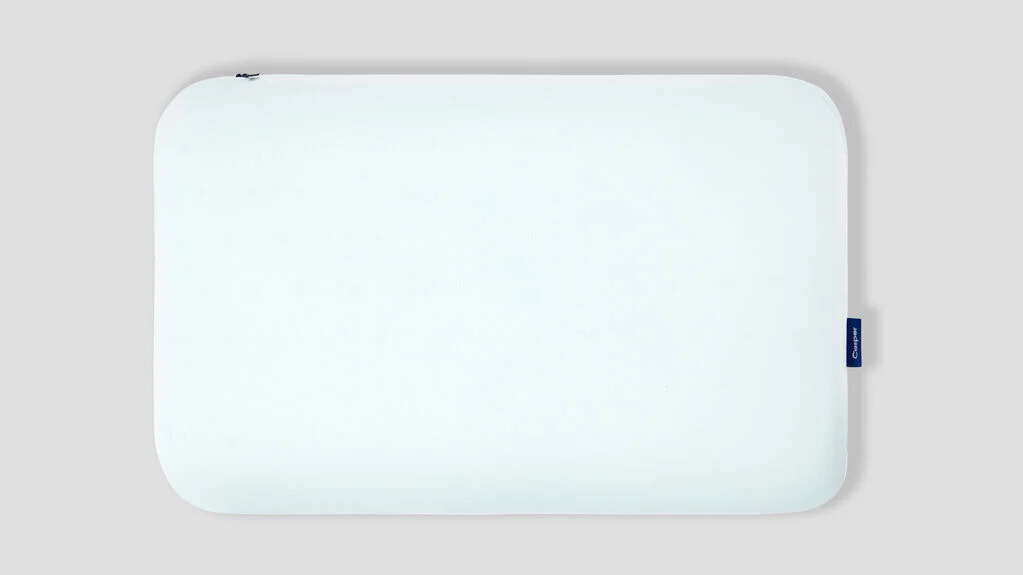
What is latex?
There are two main types of latex: Natural and synthetic. Natural latex is simply sap derived from rubber trees, which is then mixed with non-toxic materials to form a froth before being baked. Examples include Talalay or Dunlop. Man-made latex on the other hand is made from petroleum-based chemicals.
Latex pillows are known for their naturally cooling abilities and signature springy, bouncy feel. Because of this, they can 'give' and contour around the neck and head, but spring back to shape when you change positions.
This responsive and adaptive materials means you remain supported no matter what sleeping position you rest in. Natural latex models like the Saatva Latex Pillow are usually on the pricier side due to the complexity and costs involved in the production process.
Memory foam and Latex Pillows: similarities and differences
There are more differences than similarities between memory foam and latex pillows, because ultimately they result in a very different feel. However, you can rely on both to provide excellent support and cushioning, with the memory foam providing a 'sinking' feeling, better suited to staying in one position, and the latex still allowing you to sink into the pillow but responding more quickly to your movements.
Memory foam pillows, like the best memory foam mattresses, are best suited for side sleepers thanks to their contouring effect on your head, shoulders and neck. Side sleepers often face pressure build up in the shoulders, as well as the potential for the spine to be misaligned if a pillow doesn't bridge the gap between the neck and head. However, memory foam can help support the head while taking pressure off the shoulders. But it's important to note that they will sag overtime due to regular foam compression.
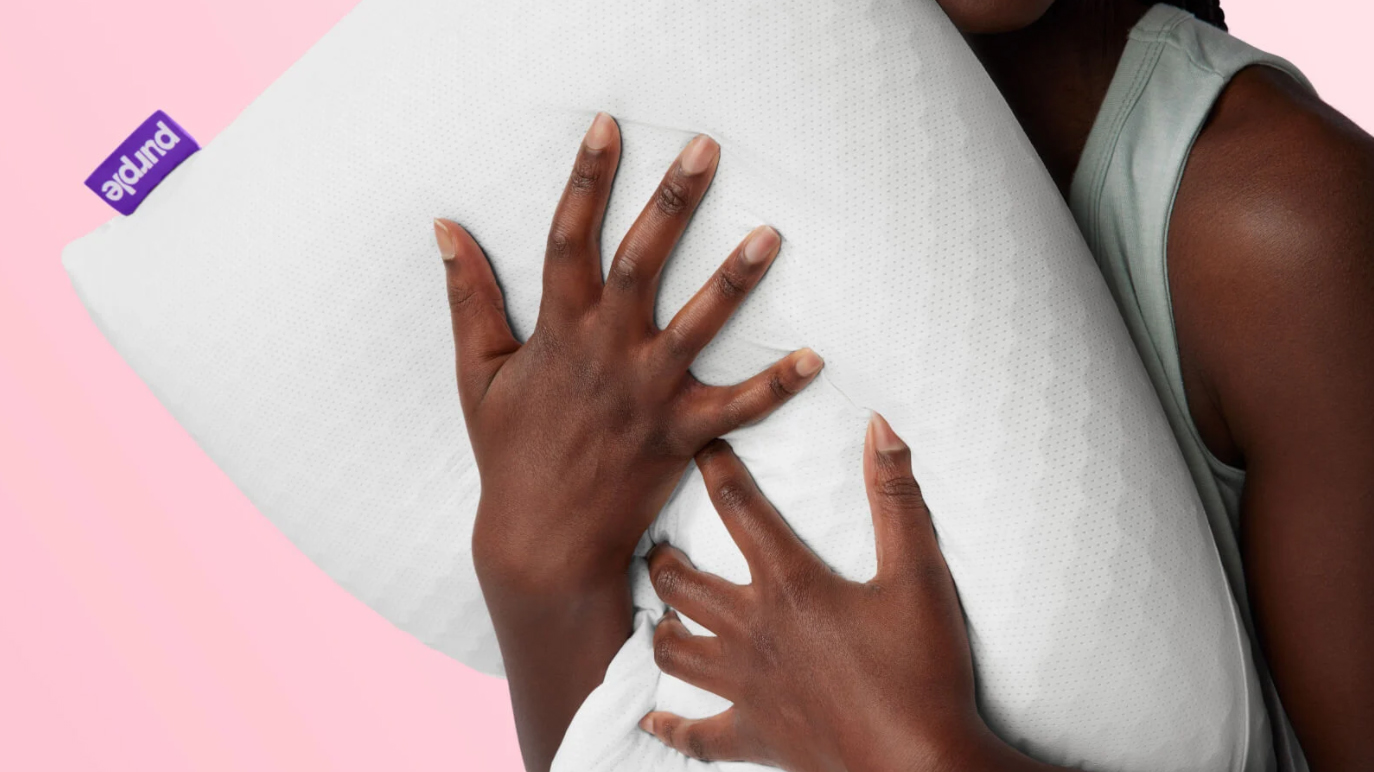
Latex pillows, on the other hand are more durable and will maintain their shape and support for longer. This is largely because of the responsive nature of latex. Natural latex pillows are likely to last longer than synthetic, and you're likely to see long warranties thanks to the material's durability.
Latex is likely to suit many types of sleeper, because of the adaptive materials, but especially combination sleepers who toss and turn throughout the night. They are also an ideal choice for hot sleepers due to the natural cooling properties of latex, compared to memory foam's tendency to trap heat (more on this to follow.)
Memory foam and Latex: prices and deals
Memory foam pillows can range drastically in price depending on their construction and the quality of the foam used. For instance, the Coop Home Goods Original Pillow (which uses a shredded memory foam and microfiber blend) with a fully adjustable fill is a mid-range purchase for a specialist pillow at $79 for a queen size at Coop Home Goods, compared to the Casper Snow Hybrid which falls in the luxury price category at $134.10 (was $149) at Casper. However, there are plenty of budget options available at amazon, too, starting at $20.
You can also often find memory foam pillows on deals during major mattress sale events. Right now, Casper offers 10% off its specialist memory foam pillow and, while it's currently full price, the Coop Home Goods Original pillow often has a 20% discount applied.
Latex pillows are often slightly more expensive than memory foam. As we mentioned, this is because many brands choose to use organic, natural latex. The process of producing this material has a high cost involved. Similarly to memory foam, you can expect latex pillow prices to vary. The Saatva Latex Pillow is $165 at Saatva, while the Purple Harmony Latex Pillow is $199 for a standard size at Purple. While there are more budget options from retailers like Amazon, you're unlikely to find a $20 latex pillow. Prices usually start from around $40.
However, because of the longer lifespan, in the long run these pillows are worth their price as you're unlikely to need to replace them, as you might with man-made materials or synthetic pillows.
Memory foam and Latex: comfort and support
While both are specialist materials that will offer superb comfort and support compared to your standard pillow, when it comes to which one will offer the right feel for you, it depends on your sleep needs and lifestyle.
A memory foam pillow gives a cozy, sinking-in feeling. Firmness levels and loft can change, so you may get a marshmallow soft feel or a firmer more slowly-contouring pillow. However, if you're after adaptive support that'll move with you as wriggle and toss and turn, memory foam probably isn't the material for you.
Memory foam will offer better contouring than latex, moulding it's shape around your head and neck. This is great news for back and side sleepers, especially those with back pain who need to ensure their spines are aligned throughout the night. This is why the best mattresses for back pain often use memory foam, combined with springs for extra support.
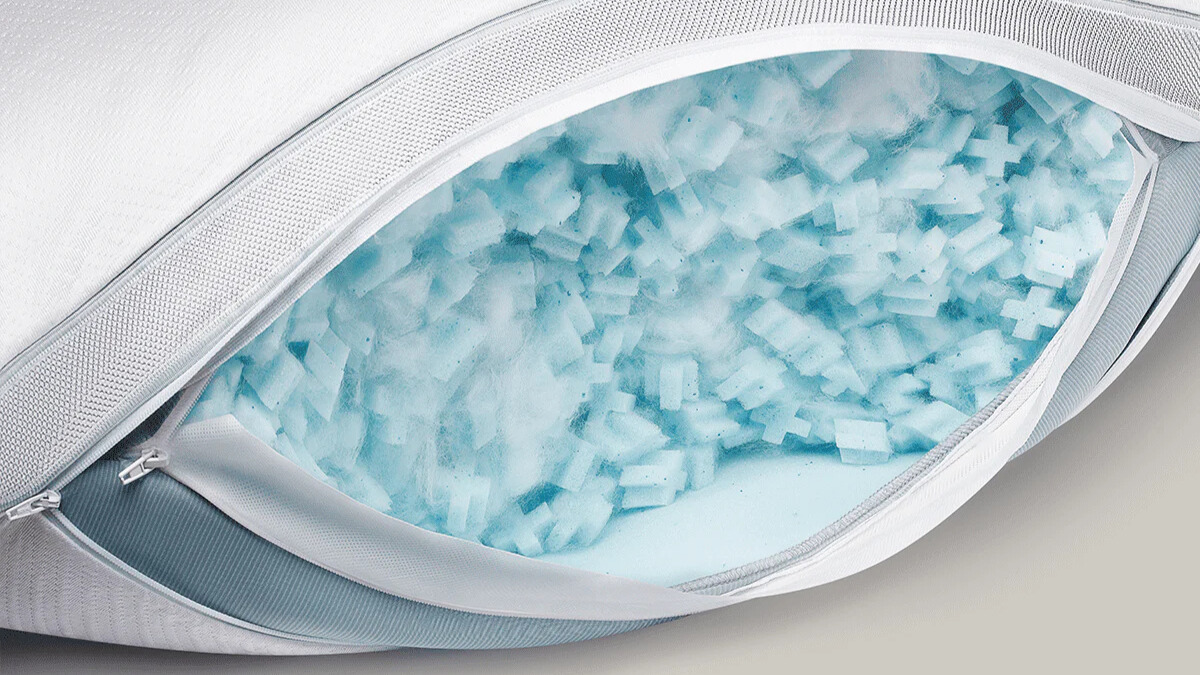
Latex pillows, on the other hand, will still offer plenty of give but instead of the slow moulding that memory foam has, you'll feel the contouring support instantly. When you switch sides or sleeping position, the pillow will bounce back to shape quickly, letting you get comfortable again.
If you're a heavier weight sleeper, latex will be a great alternative to memory foam as it'll be more durable and will bounce back to its original shape. Firmer memory foam will also suit heavier weight sleepers, but you'll need to ensure the material is a high-density and high-quality foam so you don't get long-lasting body impressions.
Memory foam and Latex: temperature regulation
Temperature regulation is perhaps the one parameter which makes memory foam and latex pillows stark opposites.
This is because memory foam is infamous for trapping heat thus often being unsuitable for those prone to night-sweats during sleep. Although, not all memory foam pillows are the same. With the help of cutting edge cooling technology, like the cooling gel infused memory foam used in Coop Home Goods EdenCool+, hot sleepers can now enjoy a cool and comfortable sleep.
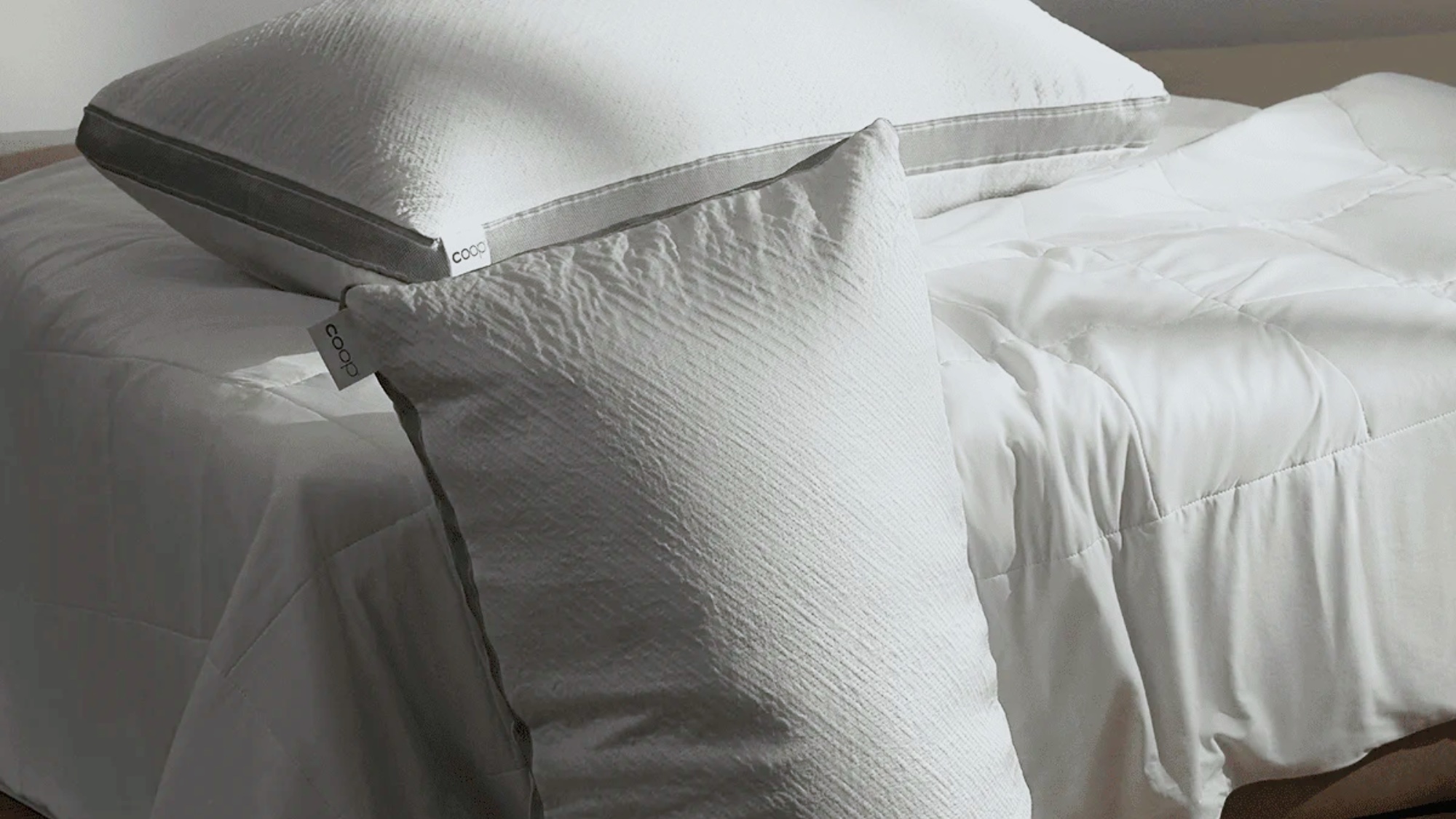
However, latex will often beat memory foam when it comes to temperature regulation, even if you opt for specialist cooling memory foam. This is because the structure of natural latex is very open, letting plenty of air flow through the pillow.
This is why many of the best cooling mattresses feature latex. This helps keep the pillow fresh and stops it from trapping heat. Whereas memory foam is a very dense structure, meaning airflow is reduced and heat can become trapped.
Natural latex pillows are often made with other organic, natural materials like GOTS-certified cotton or GOTS-certified wool, like the Sleep Number NaturalFit Ultimate Pillow. These are naturally moisture wicking and breathable, aiding temperature regulation further.
Memory foam vs Latex Pillows: Which should you buy for your sleep?
Buy a memory foam pillow if...
✅You're a side sleeper: Memory foam pillows are ideal for side sleeping as it provides the right loft and firmness to bridge the gap between your ears and shoulders.
✅You suffer from neck pain: The pressure relieving properties of memory foam pillows will help reduce the stress placed on your neck muscles thus promoting a comfortable sleep. The material will also follow the natural curve of your neck, maintaining the alignment with the rest of your body.
✅You need a pillow within a budget: Like we said, memory foam pillows are available across different price ranges which means it's more affordable in comparison with their latex counterparts.
Buy a latex pillow if...
✅You're a hot sleeper: If you're someone prone to overheat during sleep, it's best to invest in a latex pillow which is naturally cooling and breathable.
✅You need a durable pillow: Latex pillows are known to maintain its comfort and support for much longer compared to other pillow materials, which translates to excellent durability and responsiveness.
✅You prefer a more organic pillow: Latex is essentially plant-derived and thus is a suitable pick for those who prefer a more natural bedding product.







